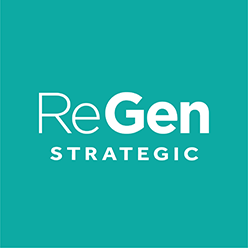WA’s small town of Collie has been keeping the state’s lights on for the past century. The problem is it’s through coal-fired power, which we now know is the single largest contributor to the growth of global emissions.
But unlike its sister coal towns in New South Wales and Queensland, Collie is setting an example of how to transition away from coal.
It comes down to a ‘Just Transition’ that supports workers and ensures the town of Collie has a future beyond coal.
What sets Collie’s transition apart from the rest of Australia is the collaboration and transparency between the energy provider, which in this case is government-owned Synergy, the WA State Government, the unions and the community.
Collie has two coal mines and three coal-fired power stations. In 2019, the McGowan Government announced that the state-owned power stations would close, and earlier this year confirmed 2030 as the deadline.
Thanks to a strong push and leadership from the unions early on, a Just Transition Working Group was set up. Initially there was a lot of raw emotion from workers and a community that had ultimately survived on a coal identity trying to save its town.
Closures of this scale impact property prices in the town, which means that these workers can’t just sell up and leave to find another job. The flow-on effects for families and local businesses can be devastating.
To combat these concerns four sub-committees of the working group were set up that included:
- Economic diversity and new industries
- Workforce planning and training
- Committing to a just transition
- Celebrating Collie’s history and future.
Positive impacts of this working group have already been felt by the community.
Open town meetings and memorandums of understanding between the unions and Synergy, and proactive public government announcements have all contributed towards the workers feeling supported and the community feeling secure in the future of their town.
On top of this, the government has announced a range of efforts to entice new industry to the area.
It’s moving its own bushfire operations to Collie, along with bushfire appliance servicing and occupational licensing.
It’s also invested in tourism including an impressive 8,000sqm mega-mural painted on the local dam, the redevelopment of Lake Kepwari for water skiing, new bike trails and improved park facilities and street facades.
This is all part of a $662 million State Government Collie Transition package. Almost $50 million of that will go towards retraining the workforce to newer industries.
There is $200 million to attract major projects to the area. Couple this with an already $3.8 billion for new green power infrastructure around the state, it’s likely we will see a workforce transition to greener energy.
There are already two promising front runners. The first being a zero-carbon magnesium plant by Magnium Australia. This company has developed a ‘green magnesium’ product and aspires to set up the large-scale operation to support the growth of renewables and create hundreds of advanced manufacturing jobs to provide access to global export opportunities.
The State Government is helping fund Magnium’s feasibility study.
The second is Pump Hydro Collie that is working in collaboration with Griffin Coal to investigate a pumped hydro energy storage scheme (PHES) for the Muja coal pit.
As the deepest open cut coal mine in the southern hemisphere, coupled with a discrete geological water reservoir which is water gaining, the Muja pit is ideally suited to PHES.
The project will create 350 direct construction jobs over three years and 20 direct full-time jobs in operation.
There is still a long way to go for the town of Collie but it’s clear that a collaborative approach is the way to make headway in ensuring workers are supported and new industry is enticed to the area for a successful Just Transition from coal to cleaner energy.
And the rest Australia should be looking to Collie as we move towards an end to coal.
 ReGen Strategic
ReGen Strategic